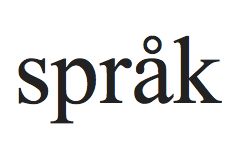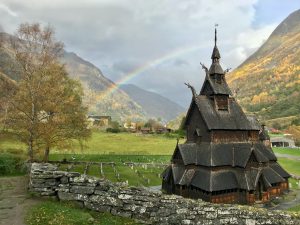1 What is the Western World?
“I wisely started with a map.”
– J. R. R. Tolkien

This course is Geography of the Western World. So, what is the Western World?
This course is a Regional Geography course. When geographers create regions, they strive to incorporate as many similarities as possible in order to develop a recognizable region, while keeping out differences. So, what are the similarities of the Western World?
We could begin with the word “Western.” Would this include every place that is west of the zero line – 0° longitude westward to 180° longitude? This zero mark is the prime meridian that passes through Greenwich, England. Thus, we would include Great Britain, Ireland, France, Spain, Portugal, (Norway’s Svalbard Islands), and Andorra from Europe, plus Algeria, Mali, Burkina Faso, Togo, Ghana, Morocco, Western Sahara, Mauritania, Cote D’Ivoire, Liberia, Sierra Leone, Guinea, Guinea-Bissau, the Gambia, Cape Verde, and Senegal in Africa. All of the Americas are included. The 180° longitude line intersects the easternmost corner of Russia. Going westward to that line would cover much of the Pacific Ocean and a number of islands up to Fiji. Correctly used, all of this 0°-180° is the Western Hemisphere; however, often this hemispherical reference is wrongly shortened to mean the Americas.
Anyway, is that set of countries what we mean by the Western World? No.
Sometimes one of the shared characteristics is a feature of the physical landscape. Since the Western World would seem to consist of half of the world, while the Eastern World is the other half, this is a huge array of lands that would have to share common features. Indeed, the Western World has many different landscapes, as does the Eastern World. Europe is known for islands, peninsulas, and mountains, but not deserts. South America has the Andes Mountains, the Amazon Rainforest, and the world’s driest desert (Atacama). North America has a full array of landscapes, even tundra in Canada and Alaska. Australia is famed for its dry Outback. Russia is enormous and leads the world in coniferous forest and in permafrost. Is there some way to identify the typical landscape of the Western World? No.
Nevertheless, there is one important element of countries’ landscapes as they relate to the understanding of regions. Are the lands contiguous? That is, does a country of the region share an international border with another country of the same region? Normally, this too is a requirement (or being nearby for island states) for inclusion in the region. However, the Western World is a region comprising half the world; surely, contiguity cannot be maintained throughout the whole western half of the world. This is correct. That means that we need to consider each of the sub-regions of the Western World. Do all the countries of North America border another country in North America? Yes, that is easy, as the only two countries in North America are the United States and Canada. Do all the countries in Europe border another country or countries in Europe? Yes, with the understanding the Iceland, Ireland, the United Kingdom, and Malta are island states within the same realm and nearby to continental states of Europe. The Pacific Realm is a host of island countries plus the continent of Australia. We count all of those islands as within the same realm. Russian Domain countries – yes. Latin American and Caribbean countries (LACAR) – yes, either continental or in the shared island realm. So, our rule of contiguity is acceptable when we assess it based on the sub-regions of the Western World.

That brings us to the human or cultural landscape. Are there shared features of the Western World when we consider the people of these lands? Economic development is a key indicator of quality of life in the human landscape. Many economies in the Western World have been very fruitful. The Human Development Index, measuring life span, education, and income as features of successful societal advances, is dominated by countries of the Western World. For 2019, the only non-Western placeholders in the top fifty are Hong Kong #4, Singapore #9, Japan #19, Israel tied with South Korea #22, UAE #35, Saudi Arabia #36, Qatar #41, Brunei #43, Bahrain #45, Oman #47. However, it also is true that not all Western World countries are greatly developed. Haiti ranks #169 out of 189 countries, while some Pacific island states (Solomon Islands #153) and other Latin American and the Caribbean (LACAR) countries (e.g., Guatemala and Nicaragua, tied #126) score poorly. Therefore, this measure also does not fully work for creating the Western World as a region. Some capitalist economies of the Western World have produced strong economies and developed societies, but other Western countries haven’t and some Eastern countries have.

Language is a core feature of culture. Indo-European languages include a number of Romance languages such as French and Italian, a set of Germanic languages including English and German, and several Slavic languages such as Russian and Czech. That list goes on, consisting of many other languages too – Greek, Latvian, Romanian, Dutch, … . English settlement of Australia included bestowing its language on this land down under. Note that several languages in this Indo-European family were brought to the Americas to become the dominant languages there – English, Spanish, Portuguese, French. For instance, in Nicaragua over 4.3 million people speak Spanish, whereas the top native language Miskito is spoken by only 154 thousand.
There are some problems with this formula. In Europe, there are only a few national languages that are not in this family, but Hungarian, Finnish, and Estonian are in the Finno-Ugric family. In Latin America, there are countries where the Indo-European language is spoken by large numbers of people, but a native language is spoken by similarly large numbers. For instance, in Paraguay, Spanish and the native language Guarani each are spoken by nearly 90% of the population. In Sub-Saharan Africa, there are a few countries that feature an Indo-European language as an official language, though mixed with several to many native languages. In Liberia, English is an official language, spoken by over 80% of the population, yet there are many languages spoken, as Kpelle is most common at 20%. Also, it should be noted that some national languages are in the Indo-European family, yet we do not count those countries in the Western World. Hindi in India, Persian (Farsi) in Iran, Urdu in Pakistan, and Bengali in Bangladesh are examples. In sum, the national languages of the Western World are almost uniformly in the Indo-European family, but the Western World does not have an exclusive hold on this language family.

Religion is a key element of culture. It is immediately apparent that Christianity is a shared feature throughout the Western World. Not necessarily an official national religion, Christianity is the majority religion of the modern histories of the Americas, the Russian Domain, and Australia and New Zealand. Among those professing religious faith, Christians dominate nearly all European countries, except the small states of Albania, Kosovo, and Bosnia & Herzegovina. Sometimes, Christianity is the majority religion in countries on other continents: in Asia – the Philippines, in Africa quite a few – Nigeria, Tanzania, Kenya, Ethiopia and others. In the Western World, Christianity is the predominant religion, although it can be noteworthy in some countries of the Eastern World too.
If a country’s society speaks an Indo-European language, predominantly and historically professes the Christian faith, and borders another country in the Western World (or if an island, then is nearby), then it is in the Western World.
A few countries are included in the Western World even while not meeting all three criteria, but especially due to geographic contiguity. This is where landscape, in this case the continent, makes a difference. There is no other reasonable regional fit for these countries. Admittedly, this is awkward. Yet, this is one of the challenges of Geography in constructing regions.
Some countries do not meet the religion requirement, but must be counted by contiguity. Kosovo, Albania, and Bosnia & Herzegovina are Muslim countries, but must be counted in Europe. Other countries do not meet the language requirement, but must be counted by contiguity. As mentioned, Estonia, Finland, and Hungary do not feature dominant Indo-European languages, but must be counted in Europe. The same is true for Paraguay in LACAR.
In a twist, there are countries that would seem to fit into the Western World by criteria, but are not accepted. In Sub-Saharan Africa, in Liberia over 80% of the population are both Christian faithful and English speakers. In Nigeria, there is a similar majority. However, in Sub-Saharan Africa the only two Christian-believing, Indo-European-speaking countries that border each other are the small lands of Gabon and Equatorial Guinea. So while some African countries have our criteria for religion and language, they fail the contiguity test of aligning next to sets of other Western World countries.
That took a lot of effort. To sum up again, it is location, language, and religion that are the keys to determining which countries are in the Western World.
Did You Know?
If Turkey ever is added to the European Union, then it will be counted in Europe, but until then, Turkey is best counted in the Middle East (sometimes called Southwest Asia). With Turkey in the Middle East, could Kosovo or Albania or Bosnia & Herzegovina be counted as part of the Middle East? Any of those choices seems jarring to the concept of Europe. Furthermore, Turkey is not contiguous to any of those three small countries. Albania and Kosovo share a border, but neither touches Bosnia & Herzegovina.
Compare that to the location of Azerbaijan. The Soviet Union included the republic of Azerbaijan. With the breakup of the Soviet Union, Azerbaijan became an independent country. Given its Muslim population with a moderate and oil-based economy, it seems reasonable to place it in the Middle East. Given that Azerbaijan borders Iran, another Middle Eastern country, this is not at all jarring.
In Norwegian and Swedish languages, the word språk means language.
Check Your Understanding
Cited and additional bibliography:
“2019 Human Development Index Ranking | Human Development Reports.” 2019. Undp.Org. 2019. http://hdr.undp.org/en/content/2019-human-development-index-ranking.
“Geographical Distribution of French Speakers.” 2020. Wikipedia. May 25, 2020. https://en.wikipedia.org/wiki/Geographical_distribution_of_French_speakers.
Sen Nag, Oishimaya. 2019. “African Countries Where Christianity Is the Largest Religion.” WorldAtlas. June 20, 2019. http://worldatlas.com/articles/african-countries-with-christianity-as-the-religion-of-the-majority.html.
Wikipedia Contributors. 2019. “List of Countries by English-Speaking Population.” Wikipedia. Wikimedia Foundation. March 9, 2019. https://en.wikipedia.org/wiki/List_of_countries_by_English-speaking_population.

